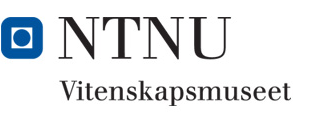Vitenskapsmuseets blogger
THE TREE OF LIFE
Evolutionary relationships among living organism are generally represented in the form of a tree. The modern concept of a tree of life goes back to the nineteen century when Charles Darwin (1859) and Ernst Haeckel (1866) understood that biodiversity had arisen according to the principle of descent with modification and interpreted the relationship among living organisms and illustrated them in the form of a tree. Tree thinking implies that existing species and lineages are connected though sister-group relationships and that evolution has continued in the different branches since their divergence.

«The affinities of all the beings of the same class have sometimes been represented by a great tree… As buds give rise by growth to fresh buds, and these if vigorous, branch out and overtop on all sides many a feebler branch, so by generation I believe it has been with the great Tree of Life, which fills with its dead and broken branches the crust of the earth, and covers the surface with its ever branching and beautiful ramifications» (Darwin, 1859)
The evolutionary principles proposed by Willy Henning (1950) were decisive for understanding that classification of living organisms must follow direct ancestor-descendant relationships (principle of monophyly), thus providing solid ground for a classification (systematics) that would integrate morphological diversity (taxonomy) and evolution (phylogeny).
Today, we can visualise the outline of the entire tree of life as never before due to the combination of improved theory, development of widely accessible software and powerful hardware, and enormous amount of currently available data after the introduction of DNA-sequence techniques.
In the book THE TREE OF LIFE, 75 authors have collaborated to provide a state of the art of the knowledge about the main branches of the tree of life (44 chapters with major groups of organisms as shown in Figure 1), aspects of evolution to which phylogenies are indispensable (8 chapters) and current techniques and methods of phylogenetic reconstruction (3 chapters).

The aim of the book is to provide a resource for university students and professionals in biology and other disciplines, but also to provide a solid structure and homogenous content non-existent in other books.
Summary by publisher: «It is a comprehensive overview of the evolution of living organisms. Chapters include genome features, evolution of characters, biogeography and biodiversity, differentiation and speciation, plus chapters on evolution influencing factors including symbiosis, biogeography, systematics, and phylogenetic research that drives the field«
Please find more information about the book and its content here: Vargas, P., & Zardoya, R. (2014). The tree of life: Evolution and classification of living organisms. Sinauer Associates. 719 pp.
Maria Capa is a coauthor in one of the chapters of the book: Aguado, MT., Capa, M., Oceguera-Figueroa, A. & Rouse, G. 2014. Annelids, segmented worms. In: Vargas, P. & Zardoya, R. (eds). The tree of life: Evolution and classification of living organisms. Sinauer Associates.
This book could be considered as part of the curriculum for following courses of the NTNU Department of Biology:
BI8002 – Advanced Biosystematics
BI2036 – Marine Biodiversity
BI2043 – Biodiversity and Conservation Biology I
BI3082 – Biodiversity and Conservation Biology II
BI1002 – Faunistics and Floristics
